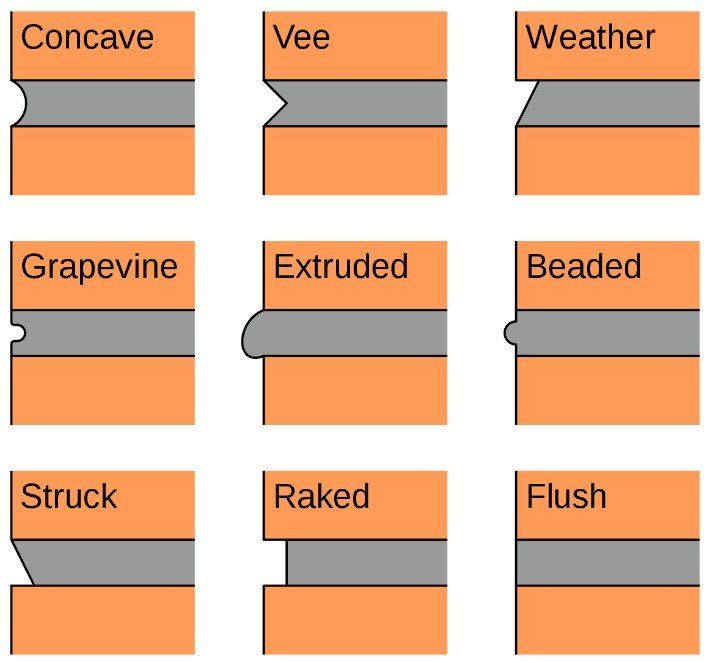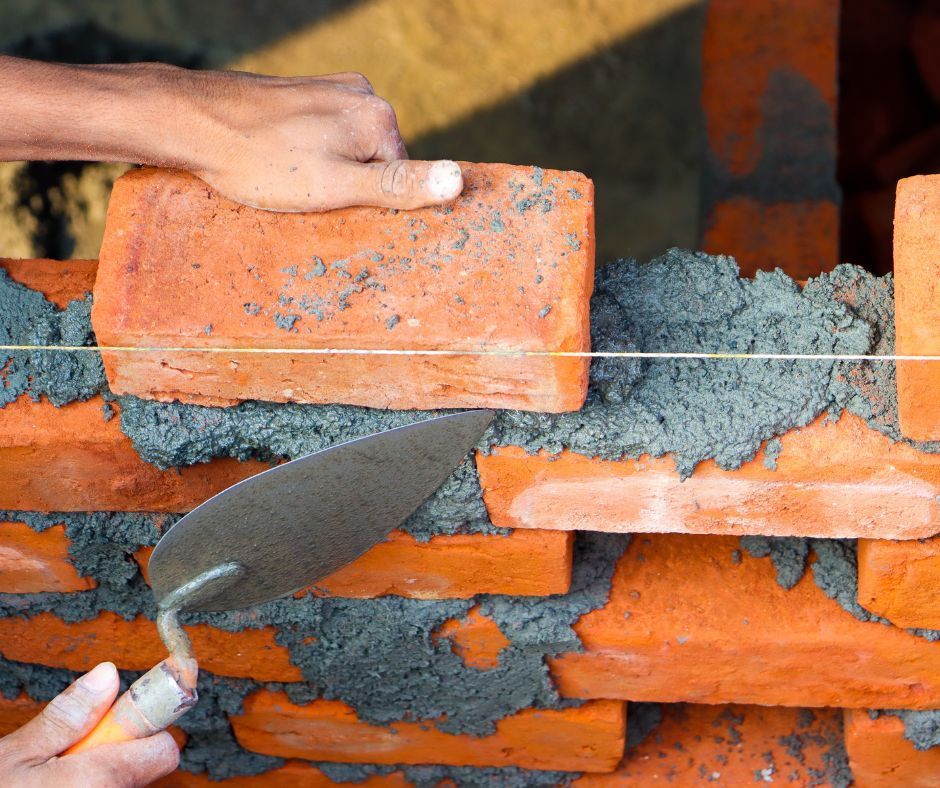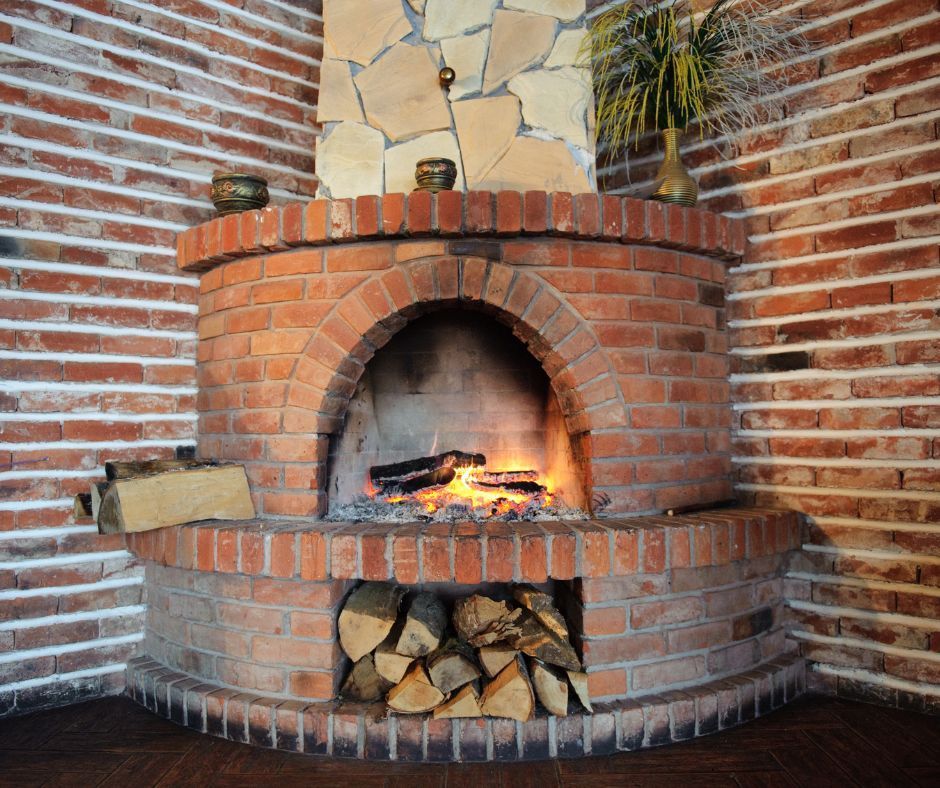Types of Pointing Finishes
There are eight different pointing finishes. These include flush pointing, tuck pointing, beaded pointing, weathered pointing, keyed pointing, V-grooved pointing, struck pointing and recessed pointing. Each of these finishes has a different purpose and can be used to achieve a certain look on a masonry wall.
Keystone Pointing offers highly specialised Tuckpointing services in Sydney. Let us fill you in on some of the
pointing finishes on many heritage listed masonry buildings.
Flush pointing
Flush pointing is the most common type of pointing and it is used to create a smooth, even surface on the mortar. The mortar is pressed flush with the face of the wall but it is not water-resistant. It is best used when the wall is to be plastered or when the joints are to be hidden under paint.
Tuck Pointing
Tuck pointing is a restoration process that is used to improve the appearance of brick and mortar joints. It can also help to protect and preserve the mortar in these joints, which in turn extends the lifespan of the mortar and the overall structure of the building.
Tuck pointing finishes feature a thin line of lime putty is applied over the restored mortar joints, which gives the impression of perfect brickwork. This type of restoration is common amongst heritage buildings in Sydney .
Tuck pointing is a skilled traditional art that is labour intensive and requires the utmost precision and patience to deliver.

Beaded Pointing
Beaded pointing is a type of mortar joint that is created by pressing mortar into a joint of brickwork. The mortar is then rounded off with a beaded tool, which gives it its distinctive appearance. This type of joint is not as water-resistant as some of the other designs, but it is considered to be more aesthetically pleasing by casting interesting shadows.
Whethered Pointing
Weathered pointing is a type of mortar joint that is created by pressing mortar into a joint of brickwork on an angle sloping downward from the brick above. This type of joint is considered to be aesthetically pleasing, commonly used on older-styled buildings, as it can help to give the impression of age and character.
CONTACT US FOR TUCKPOINTING SOLUTIONS IN SYDNEY
If you want your home or property restored by an expert contact us today to learn more about our services and how we can help.
Contact our brick pointing restoration specialists to find out some more information on how to organise brick tuckpointing for your home or property. Keystone Pointing is available Sydney-wide.
Keyed Pointing
Keyed pointing is a type of mortar joint that is pressed into the mortar with a pointed tool, which leaves a curved arc groove in the mortar. This type of pointing gives the wall an excellent exterior look. It is used especially for the best type of work for vertical joints of walls.
Steel bars are often used to give a semi-circular shape to the keyed pointing, this can often enhance the appearance of the wall. This type of keyed pointing is most commonly used for the exterior walls of a building. It provides a strong and durable joint that is capable of withstanding extreme weather conditions.
V-Grooved Pointing
V-grooved pointing is a construction technique that is used to create a V-shaped groove in the joints of brickwork walls. This technique is often used to repair damaged brickwork joints, as it can help to improve the overall appearance and stability of the wall. V-grooved pointing can also be used to prevent water infiltration, as the V-shaped groove helps to direct water away from the wall.
Struck Pointing
Struck pointing is a type of masonry joint that is formed when the bottom edge of the mortar joint is recessed allowing the top of the next brick edge to stick out slightly. This can also create aesthetically pleasing shadows that enhance the masonry, however, it is not as weather resistant as it allows water to sit on the top side of the brickwork.
Concave Pointing
A type of mortar joint that is characterised by its depressed or recessed appearance. This type of pointing is created by pushing the mortar into the joint with a special tool called a recessing tool. This tool makes a concave groove in the mortar.
Concave pointing is common in both residential and commercial buildings. It can be used on any type of masonry wall, including brick, stone and concrete. The size and depth of the recessed point can also be used to achieve a variety of different looks, depending on how far and wide the joint is.

Image Source: https://commons.wikimedia.org/w/index.php?curid=81475205
Take home ‘points’ to ‘tuck’ away...
Keystone Pointing primarily focuses on two types of pointing finishes, this is the concave finish and the flush finish, when used in conjunction with a tuckpointed brickwork finish.
We also typically offer the weathered and raked pointing types as they also offer benefits in terms of structural stability and long term effectiveness.
Ideally we will match the existing mortar and pointing style on your property.
Give us a call
0437 505 423 to discuss your
repointing and
tuckpointing requirements in Sydney.
CONTACT US
Contact us today for your free consultation.
We service all of Sydney including Sydney city, Eastern Suburbs, Northern Beaches, Inner West, South West, Western suburbs and North Shore.
Blog Post Contact Form
We will get back to you as soon as possible.
Please try again later.
More Posts Like This:
CONTACT US
Contact us today for your free consultation.
We service all of Sydney including Sydney city, Eastern Suburbs, Northern Beaches, Inner West, South West, Western suburbs and North Shore.
Footer Contact Form
We will get back to you as soon as possible.
Please try again later.

Keystone Pointing is Sydney’s leading brick repointing and masonry restoration specialists with over 14 years industry experience.
BUSINESS HOURS
- Mon - Fri
- -
- Saturday
- -
- Sunday
- Closed
Licence number: 361776C
ABN: 55275797857
Keystone Pointing | Proudly Powered by DSD


